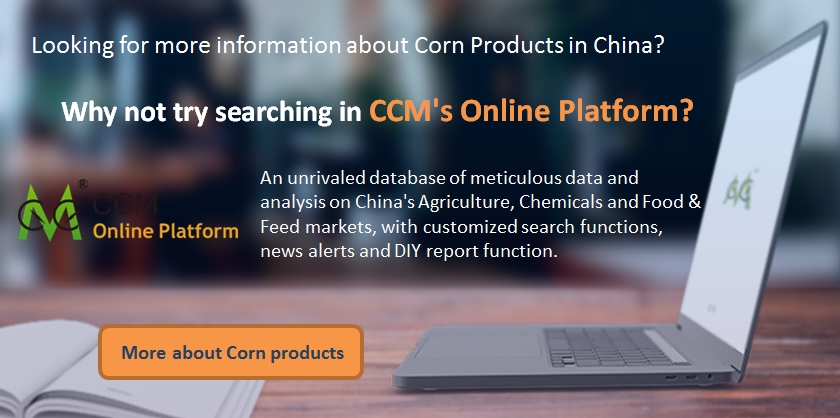Summary: MEE drew up the amendments for discharge standards of water pollutants for starch, citric acid and yeast industries for public comments in Dec. 2021.
To strengthen controls on wastewater discharges from citric acid, starch and yeast industries, the Ministry of Ecology and Environment of the People's Republic of China (MEE) publicised the Draft of Amendments for Discharge Standards of Water Pollutants for Starch Industry (GB 25461-2010), the Draft of Amendments for Discharge Standards of Water Pollutants for Citric Acid Industry (GB 19430-2013), and the Draft of Amendments for Discharge Standards of Water Pollutants for Yeast Industry (GB 25462-2010). The three drafts are open for public reviews and comments.
Motives of these changes are boiled down to three fronts:
Discharge Standards of Water Pollutants for Starch Industry
Starch wastewater is of high organic concentration and favourably biodegradable quality, low in toxic and harmful substances. According to the indirect discharge criterion under the implementing Discharge Standards of Water Pollutants for Starch Industry, only when the removal efficiency of pollutants in wastewater is above 90%, can this processed wastewater enter the wastewater treatment plants—this practice has been an heavy cost for the manufacturers. However in draft, the requirement for the indirect discharge is loosened to a negotiable limit value that should be agreed by both manufacturers and the wastewater treatment plants, based on the quality characteristics of wastewater from starch industry (hereafter shortened to negotiable indirect discharge measure)
On the bright side of starch manufacturers, adopting the negotiable indirect discharge measure in part area where is in the presentence of centralised wastewater treatment plants specialised in treating wastewater from starch industry, is a way to cut cost.
Take, for example, a potato starch company in Anding District, Gansu Province. It produces annually 100,000 tonnes of starch and discharges 6–8 tonnes of wastewater per tonne of starch. Before adopting the negotiable indirect discharge measure, the company finds it difficult to meet the regulatory requirement in pollutant removal efficiency but cost up to USD3.92/t (RMB25/t) in wastewater treatment before discharge. However, upon the launch of the new standard, the company will only pay about USD2.35/t (RMB15/t) to treatment plant for its wastewater. The means starch manufacturers will save USD0.94 million–USD1.25 million (RMB6 million–RMB8 million) per year on wastewater treatment front.
Discharge Standards of Water Pollutants for Citric Acid Industry
Citric acid wastewater shares the same features as starch wastewater in composition of high concentration of organics. Therefore, the existing Discharge Standards of Water Pollutants for Citric Acid Industry, has also represented a high treatment cost. The new introduction of the negotiable indirect discharge measure can not only reduce energy consumption and wastewater disposal cost, but also avoid adverse impacts on downstream wastewater treatment system from excessive chemicals use of upper reaches.
While in the case of citric acid manufactures, the current environmental protection spending accounts for 10%–15% of the total cost. However, if the manufactures in this sector and downstream wastewater treatment plants mutually agree on a looser indirect discharge limit, say, setting CODcr (dichromate oxidizability) at a range of 1,000 mg/L–1,500 mg/L for the wastewater after treatment of anaerobic and ready for aerobic process—this will shorten the total aeration time by half as compared to the original indirect discharge criteria and hence, reduce 25% of treatment cost roughly. Counting based on the collective product production and the wastewater discharge volume per product unit in 7 citric acid manufacturers, the wastewater treatment cost for this industry is set to cut back approximately USD4.11 million (RMB26.25 million).
Discharge Standards of Water Pollutants for Yeast Industry
Similarly, manufactures has been suffering a high wastewater treatment cost in yeast industry. Meanwhile, the overall operation costs of wastewater treatment plants often pick up with the additional carbon source input in the conventional bio-denitrification process since carbon and nitrogen contents are low in the water from manufacturing. Considering water quality character of yeast wastewater that has similar traits as those of starch and citric acid, negotiable and agreed indirect discharge limit is added to the new standards.
Generally, the input per year in wastewater treatment facilities for each yeast manufacturer takes up 10%–20% of the annual revenue as treatment cost of wastewater from yeast industry is at USD0.68/t–USD4.08/t (RMB4.36/t–RMB26/t). But via the negotiable indirect discharge measure, they will be able to spend less.
The current permitted discharge limits for a yeast manufacturer are: CODCr≤300 mg/L, NH3-N≤25 mg/L, TN≤70 mg/L, TP≤8 mg/L, pH 6–9. After treatment by manufacturer, NH3-N concentration in the water will be down to 15mg/L or below, CODCr be around 200 mg/L, but TP will be about 8 mg/L which means polymerized ferrous sulfate flocculant needs to be added in the physical chemical treatment process, and after that, CODCr will be around 80 mg/L generating an extra spending for downstream wastewater treatment plants on more carbon source. By and large, manufacturers and downstream wastewater treatment plants will have to spend more.
Whereas, by means of negotiable indirect discharge, each manufacturer can expect to take approximately USD15,675.46 t/a (RMB100,000 t/a) off from its input of polymerized ferrous sulfate.
Source:CCM
More information about this article can be found at CCM Corn products China Monthly Report.

About CCM:
CCM is the leading market intelligence provider for China's agriculture, chemicals, food & feed and life science markets. Founded in 2001, CCM offers a range of content solutions, from price and trade analysis to industry newsletters and customized market research reports. CCM is a brand of Kcomber Inc.
For more information about CCM, please visit www.cnchemicals.com or get in touch with us directly by emailing econtact@cnchemicals.com or calling +86-20-37616606.